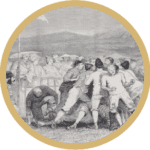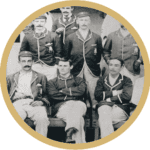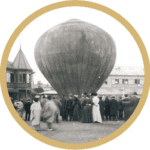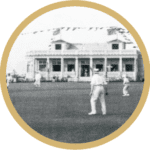BY MIKE GALBRAITH © AUGUST 2011
A History of the
Yokohama County & Athletic Club
‘Life in Yokohama in the early days was singularly pleasant. Every type of sport was readily accessible.’
The sports club known today as the Yokohama Country and Athletic Club (YC&AC) played a major role in the creation of the idyllic sporting environment fondly remembered in these words describing Yokohama life in the 1890’s. The words could equally apply to today and to almost all of the time during they last 150 years of the YC&AC’s existence.
Almost every western sport seen in Japan today was first introduced to Japan by the non-Japanese in Yokohama and the YC&AC and the other sporting clubs that it later absorbed were the driving force in their early development in the country.




